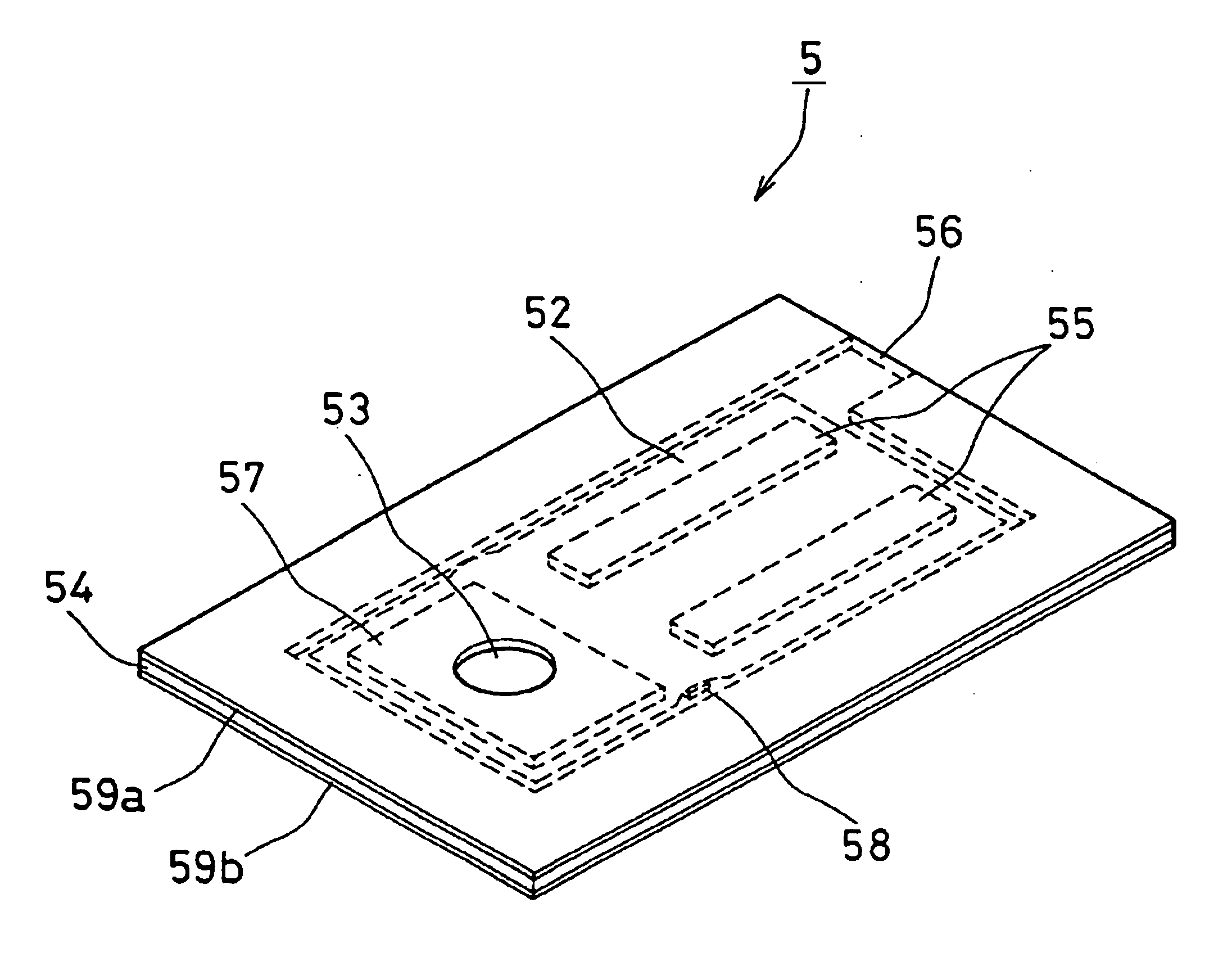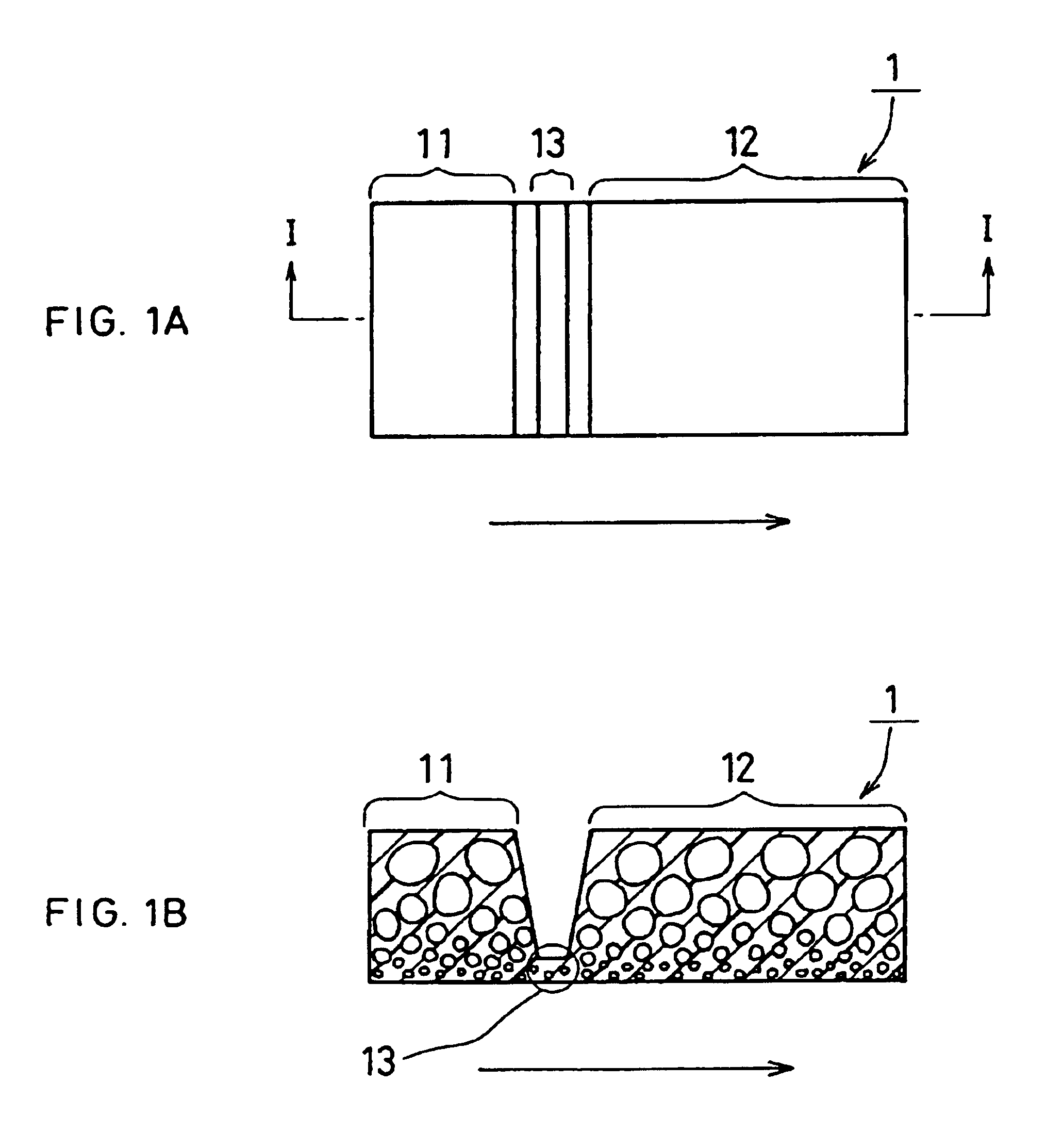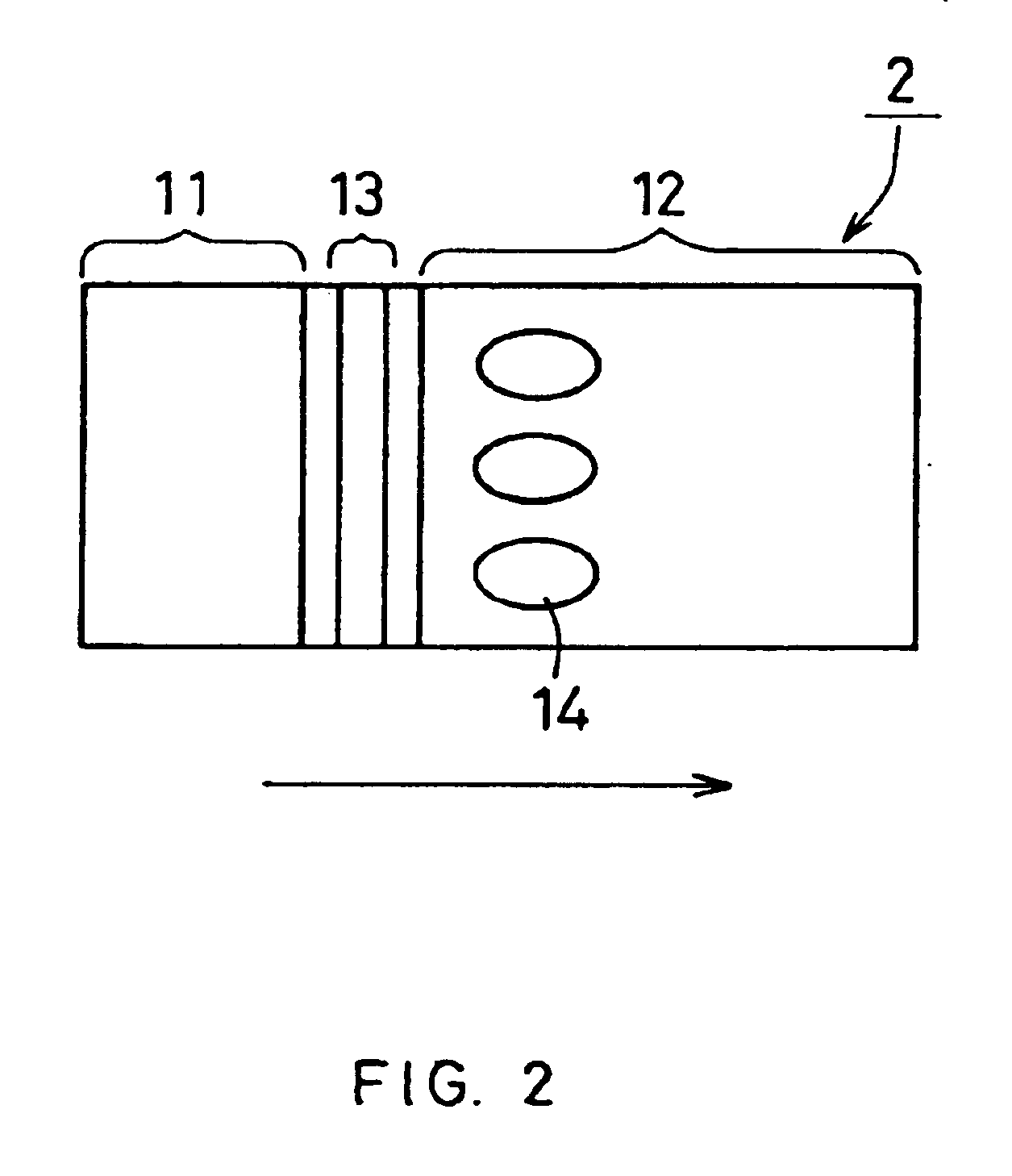Blood testing tool
a blood test and tool technology, applied in the field of blood test tools, can solve the problems of small amount of blood plasma or blood serum collected, inability to analyze trace components correctly, and inability to test tools
- Summary
- Abstract
- Description
- Claims
- Application Information
AI Technical Summary
Benefits of technology
Problems solved by technology
Method used
Image
Examples
example 1
A strip-shaped asymmetric porous membrane (made of polysulfone, with a length of 35 mm, a width of 16 mm, a thickness of 320 .mu.m, a maximum pore size of 50 to 100 .mu.m, and a minimum pore size of 5 to 10 .mu.m) was treated to be provided with hydrophilicity by being dipped in a 20 wt % glycine solution, was dipped in a 30 wt % sucrose solution, and then was dried. At a location 12 mm along the length of the porous membrane with respect to one of its ends, a disc roller was pressed against and rolled on the portion to form a groove (with a minimum width of 0.1 mm, a maximum width of 1 mm, and a depth of 150 to 250 .mu.m) in its width direction, thus producing a blood testing tool such as shown in FIG. 1. In this blood testing tool, the blood supply portion has a length of 11 mm and the development portion has a length of 23 mm.
On the center portion of the blood supply portion, 100 .mu.l whole blood of a healthy subject was dropped, and blood serum was allowed to develop sufficient...
example 2
The same blood testing tool as in Example 1 was produced. Then, 100 .mu.l whole blood (with 40% hematocrit (Ht)) of a healthy subject, which was collected using a heparin blood-collecting vessel, was dropped on the center portion of a blood supply portion of the blood testing tool. In the development portion of the blood testing tool, the blood plasma was allowed to develop sufficiently, and this was then dried. Afterwards, an extraction operation was conducted as in Example 1 and a supernatant thus obtained and used as a blood plasma sample solution. In the same manner, a total of 20 blood testing tools were produced and blood plasma sample solutions from the same blood were prepared.
PUM
| Property | Measurement | Unit |
|---|---|---|
| pore size | aaaaa | aaaaa |
| pore size | aaaaa | aaaaa |
| pore size | aaaaa | aaaaa |
Abstract
Description
Claims
Application Information
 Login to View More
Login to View More - R&D
- Intellectual Property
- Life Sciences
- Materials
- Tech Scout
- Unparalleled Data Quality
- Higher Quality Content
- 60% Fewer Hallucinations
Browse by: Latest US Patents, China's latest patents, Technical Efficacy Thesaurus, Application Domain, Technology Topic, Popular Technical Reports.
© 2025 PatSnap. All rights reserved.Legal|Privacy policy|Modern Slavery Act Transparency Statement|Sitemap|About US| Contact US: help@patsnap.com



